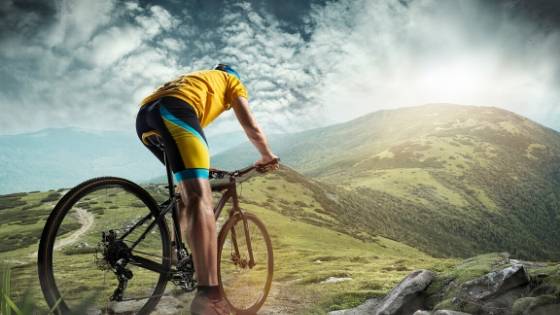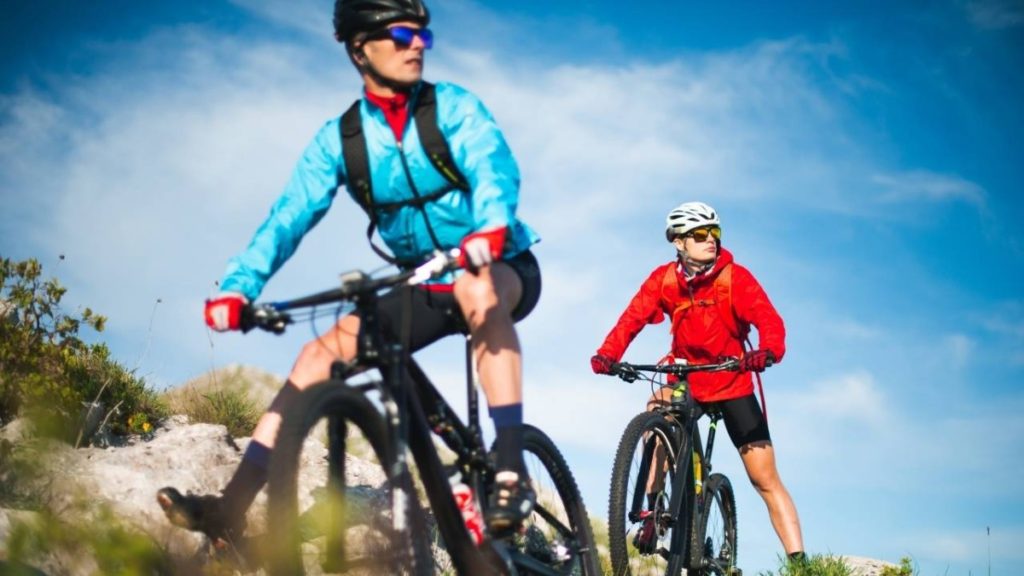
Cycling is a great way to get in shape as a beginner because it is low impact, yet still provides a good cardiovascular workout. Cycling is also wonderful for strengthening your leg muscles without putting too much stress on your joints, knees and lower back. And, of course, cycling is a awesome way to explore your neighbourhood, towns and the great outdoors.
Unlike running, which can be hard on your knees and ankles, cycling is a low-impact activity that is easy on your whole body. This makes it a great workout for people of all ages and fitness levels.
Introducing cycling into your life can be exciting and will produce considerable health benefits. The question you are asking yourselves “Am I cycling far enough”? Regardless of what new thing we decide to undertake, we all wont to know if we are on the right path to success.
Table of Contents
How Far Should You Cycle as a Beginner?
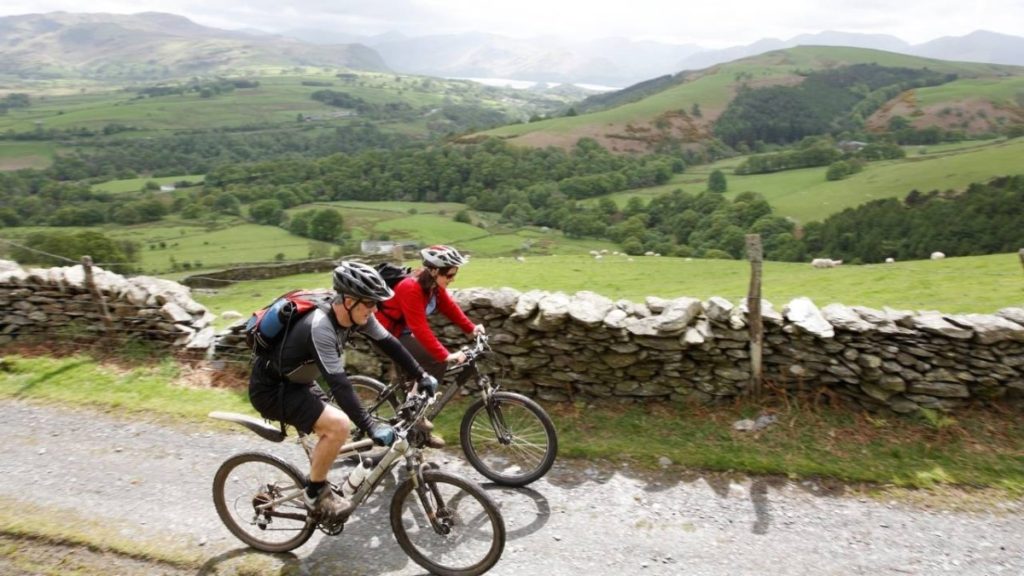
On average, a beginner should cycle for at least 30 minutes up to a maximum of 60 minutes 3 or 4 times each week to gain fitness, lose weight and improve their cycling skills. You can expect to cover around 4 miles or 6.4 km in 30 minutes because most beginner cycle at a speed of 8mph or 12kph.
If you are just starting out, you may want to start with shorter rides (4 miles) and gradually work up to longer rides (8 miles plus). Having a day of rest in-between your riding days will help your body recover and keep you motivated to cycle. Furthermore, if you get saddle soreness, the days rest will reduce the soreness on your bum. After cycling regularly you can add extra milage to your bike ride or additional days to 5 days a week.
One thing to keep in mind is that, as with any workout, it is important to warm up before you start cycling. A good warm-up will help improve your performance and reduce your risk of injury. Try riding slowly for the first few minutes to get your muscles warm and then increase your speed. Going flat out isn’t ideal and will only lead to burnout and fatigue.
Remember to cool down after your ride as well. Cooling down helps your body recover from the workout and can prevent soreness later. To cool down, simply ride at a slower pace for the last few minutes of your ride. Drink a post ride recovery shake with proteins and carbohydrates to refuel your body and build those important leg muscles.
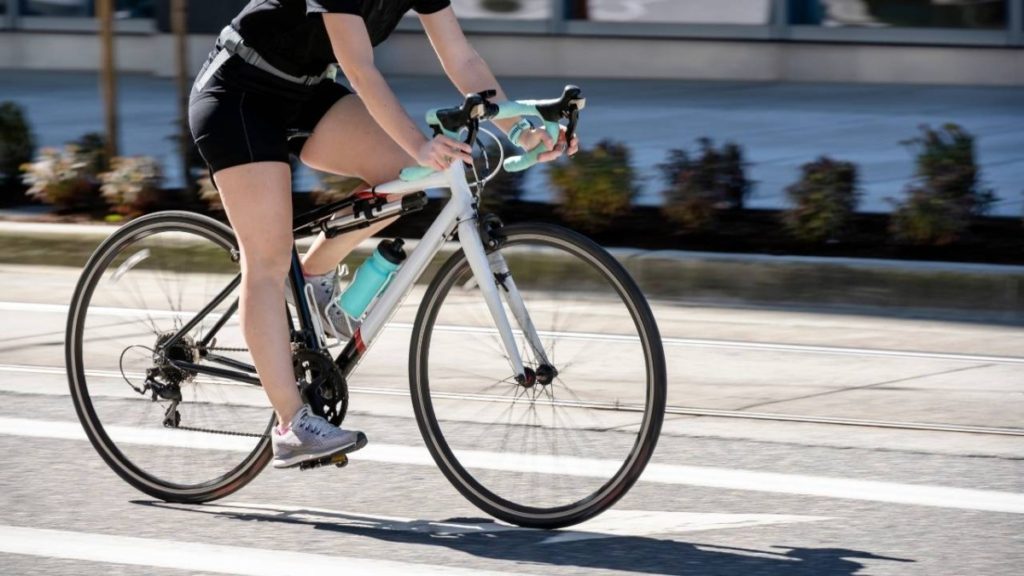
How Far Can a Beginner Cycle in 1 Hour?
A beginner cyclist should aim to cycle 8mph (12kph) which will achieve a distance of 8 miles (12km) every hours on average. The distance travelled will be affected by the surface of the ground, the weather and the type of bike used. Other factors, including fitness levels and physical wellbeing, will impact your overall mileage fo a beginner cyclists.
The most reliable approach to determine your actual mileage and range is to hop on your bike and cycle for an hour. Peddle at a manageable rate, whereby you can still hold a conversation.
You should finish your spin having enjoyed the ride but felt like you have exercised and used energy. Nonetheless, the article will provide you with much-needed information and help you identify an average distance the beginner cyclist can cover on their initial outing.
Other cycling article you might find helpful;
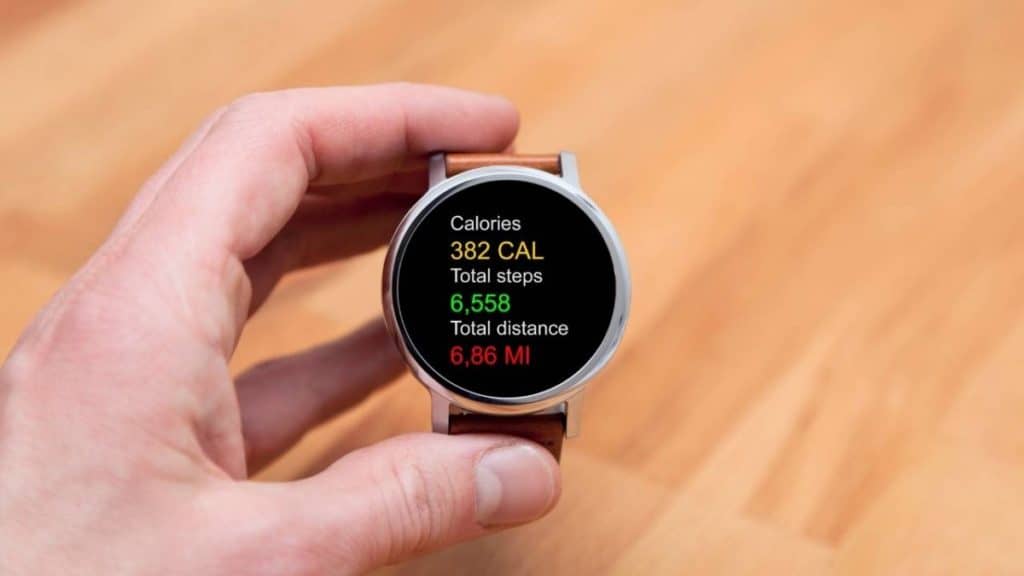
How Many Calories Will You Burn Cycling For 1 Hour?
On average, a beginner cycling at a moderate speed of around 8mph should burn approximately 600 calories in one hour. For example, someone that weights 180lbs and cycles for 1 hour non stop should burn 656 calories.
| Weight (pounds) | Calories Burned Cycle 1 Hour |
| 160 | 584 |
| 170 | 616 |
| 180 | 656 |
| 190 | 688 |
| 200 | 728 |
| 210 | 760 |
| 220 | 800 |
| 230 | 840 |
| 240 | 872 |
| 250 | 912 |
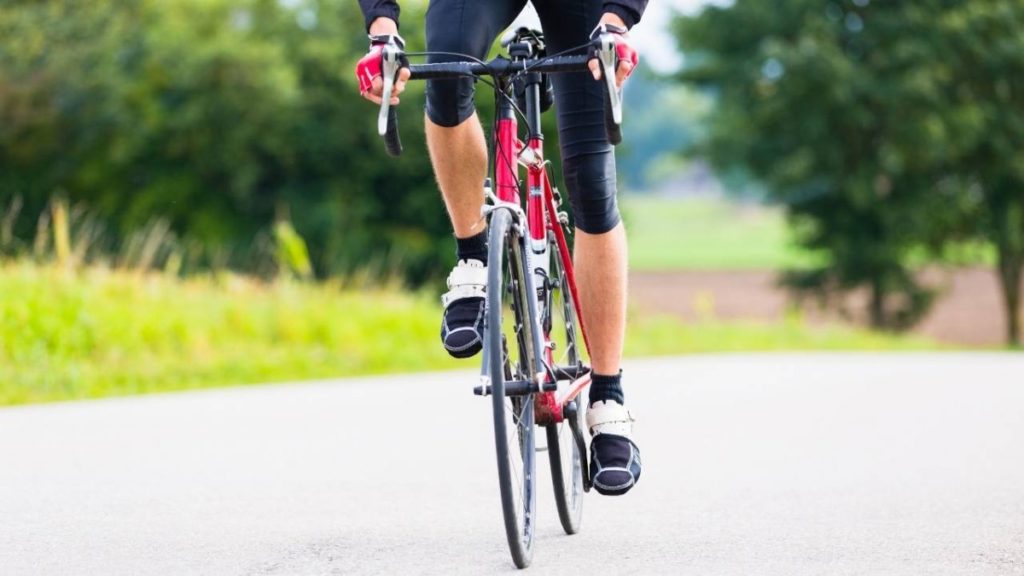
5 Factors Impacting Your Cycling Distances
1. The Surface Of The Ground On The Bike Tyres
The first factor to examine when cycling is the type of surface you are riding on. Muddy trails and mountainous terrain is much more difficult to cycle on than a smooth road surface.
It’s all about friction between the wheels and the ground. The less connection with the ground, the faster you can peddle. The more surface between the wheels and the earth creates friction and decreases your speed.
Furthermore, you have to work harder to move through mud and dirt. For maximum mileage, road cycling will give you the most significant distances.
The second considering is hills and slopes. The more you have to peddle uphill, the less miles you can grind out. A long flat road with a polished surface will be like cycling in paradise, and you can clock up some serious distance.
Unfortunately, it’s not common to arrive at these types of conditions so expect some hills and slopes along the way.Don’t avoid cycling hills because they are tough. There are many benefits to cycling uphill, and the advancement in your fitness levels will be incredible.
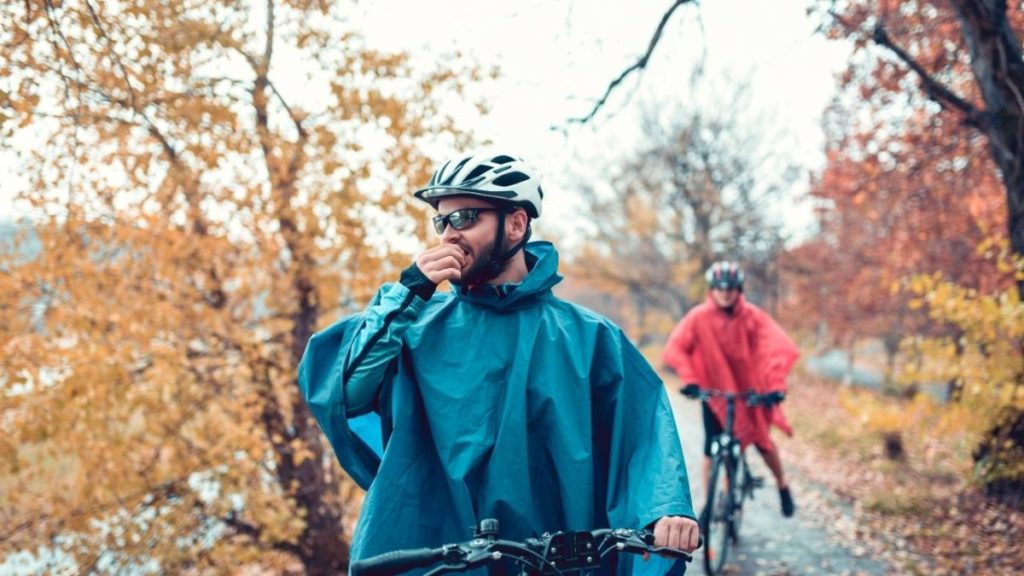
2. The Weather Impacts The Cyclists
The wind can both impact your distance travelled or can provide you with additional trust. If you are cycling into a significant headwind, it can reduce overall distance cycled dramatically.
You will have to increase your cadence on the peddles to stay moving. A one-hour cycle ride without wind will look a lot different with a headwind. For example, I regularly cycle to work; it takes me 45 minutes to cycle the 10 miles.
On days when the wind is stronger, it can add at least 15 minutes to my ride. My exertion rate increases and my legs hurt.Nevertheless, the wind can have a positive impact on your ride especially if its a tailwind. The wind will propel you along, and you can either relax and take your time or push hard a build some miles. The wind isn’t the only factor to consider, and heat can impact your range.
The temperature isn’t a problem for the bike. It has the most significant impact on your body. The hotter and humid the air, the hard you will find it to peddle. Your exertion rate will naturally increase, and your stamina will be affected.
When embarking on a ride in the heat always make sure you’re well-hydrated, take plenty of water with you and bring some money in case you run out of water. Dehydration will affect your ride quicker than your fitness, but you also need electrolytes and salt tables to replace your natural levels. Water allow will only dilute the salts your body has left leading to cramp and fatigue.
3. The Type Of Bike You Select
There are numerous different type of bikes on the market from road bike’s to BMX’s. The kind of bike you ride is only going to affect your distance if you’re comparing yourself to someone that rides a different style of bike.
For instance, I ride a road bike which is carbon fibre and weighs considerably less than a mountain bike. The distance I cover on my road bike will be vastly different than someone on a mountain bike or hybrid. For maximum mileage, a road bike will always be the quickest over large distances. However, there are some caveats to the theory.
If your cycling on roads then a road bike will be difficult to beat, but if your terrain is gravel or stones, a mountain or hybrid is going to outperform a road bike. Unfortunately, I can provide you with all eventualities as there are thousands of different styles of bike. The best advice I can give you is the type of bike you have now is enough to get you started.

4. Fitness Levels Of The Cyclists
It might seem an obvious point that your current fitness levels will have serious diversity to the potential distance you can cycle. And the reason I want to mention it is, don’t compare yourself to someone that has more experience and is far fitter. It’s important to set yourself a goal or target to reach, and having a person to admire is helpful. Yet, in the beginning, you’re trying something new, and it takes time to perfect and develop.
For example, I started cycling because I loved watching the Tour De France. I would watch these amazing athletes traverse vast distances day after day. I thought I could ride at least half those distances with ease.
I was along way from home, my bum hurt from the saddle, and I had practically no energy. I was not prepared nor fit enough to cycle these distance at the beginning. Most of all, it took me days to recover enough to get back on the saddle. If you haven’t cycled before or it’s been years I would recommend starting with a 30 minute ride.
Cycle 15 minutes away from your house, turn around and head back. Acknowledge your achievement and put your bike away. The next day add 5 minutes to your ride, and you’re commencing your cycling routine a lot better than I did. I won’t be long before your riding for hours and enjoying the scenery you have witnessed for years.
5. Physical Wellbeing Of The Cyclists
The final point I want to discuss is your physical wellbeing and more specifically sleep. The amount of sleep you get each night can influence your physical performance. A miserable nights sleep can dramatically decrease your V02 max, and recovery from previous rides takes longer. A great nights sleep provides you with enhanced energy which you can utilise to reach some impressive mileage on the peddles.
Beware of a false output level because If your sleep is impacted the next night, you might drop well short of your previous personal best. Listen to your body and stagger your rides accordingly. If you have a day of hard riding your next couple of days might need to be recovery rides. Plan your week of cycling ahead and make sure you have an equal balance with enough time to recover in-between.

Benefits Of A Bike GPS Tracker
Did you know that bike GPS trackers can help keep your exact steed, distance, and output records? The benefits of having a GPS tracker on your bike are numerous and thoroughly documented. And the data they provide are incredibly accurate.
The safety aspect includes a cycling tracking app used during rides and races to share your biking locations with other people through live GPS. The latest technology makes it much easier for you to install your bike GPS unit, whether it’s an integrated system or a standalone device.
I’ve been using the Garmin Edge 530 for over a year, and it’s a great device that never lets me down. The speed and tracking accuracy are faultless, and the Garmin app makes it easy to download and save my data. It’s also compatible with Strava. Here’s my complete owner’s review.
